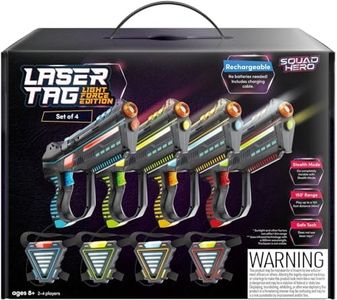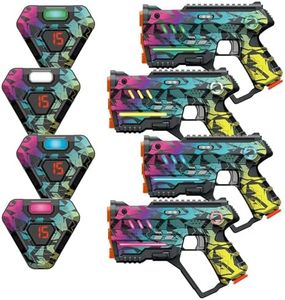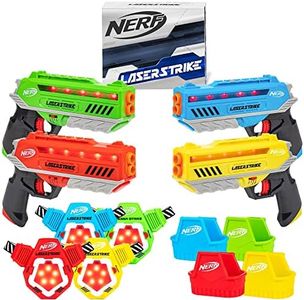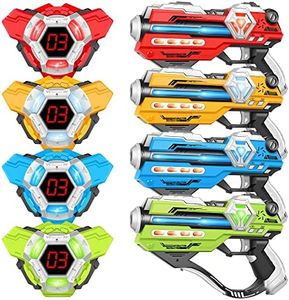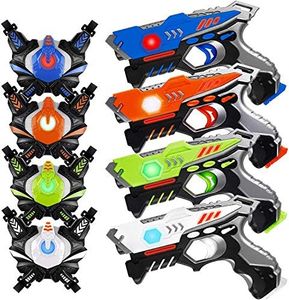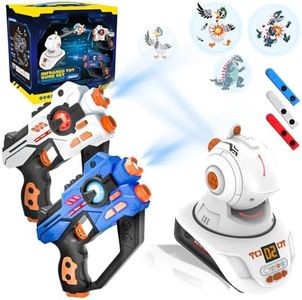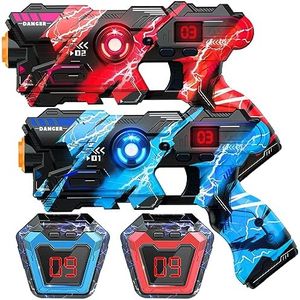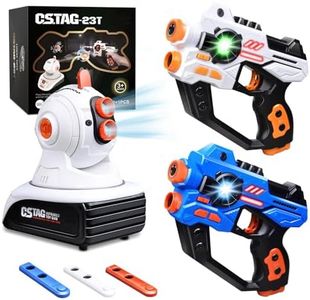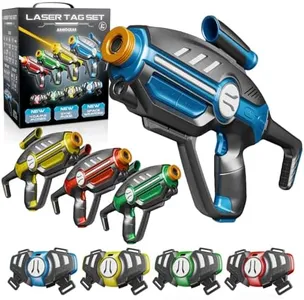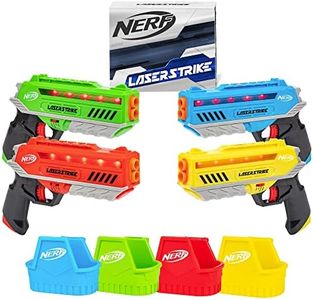We Use CookiesWe use cookies to enhance the security, performance,
functionality and for analytical and promotional activities. By continuing to browse this site you
are agreeing to our privacy policy
10 Best Laser Tag Game
From leading brands and best sellers available on the web.Buying Guide for the Best Laser Tag Game
Laser tag is an exciting game that brings friends and family together for a fun, action-packed experience. When you’re choosing a laser tag set for home or outdoor play, it’s important to understand the features that will affect how enjoyable and suitable the game will be for your group. Thinking about where you’ll play, the age range and skill of players, and your preferences for different types of games can help you pick the right option. Knowing the key features of laser tag sets will make your decision a whole lot easier.RangeRange is the maximum distance over which the laser tag blaster can accurately send a signal to score a hit. This is important because it determines where and how you can play. Short-range sets (10–30 meters) are best for small indoor spaces or younger kids, as the limited distance keeps the action contained. Medium-range sets (30–50 meters) can be used both indoors and outdoors, providing a bit more versatility. Long-range sets (over 50 meters) allow for big outdoor games where players can spread out. Think about where you’ll do most of your playing—if you have a backyard or want larger battles, a longer range might be more fun.
Number of Players SupportedThis spec refers to how many vests or blasters are included or can be connected in one game. Some sets are designed for just 2 players (good for duels or small families), while others support 4, 6, or even more. Some systems let you buy expansion packs to add more players. It’s important to consider how many people will usually join your games—a small set is good for tight groups or siblings, but bigger sets or expandable systems are better for parties and larger gatherings.
Game Modes and FeaturesLaser tag sets often come with different game modes, like team battle, free-for-all, or capture the flag. Some also add features such as special weapons (shotgun, rocket, etc.), shield/health settings, or sound and light effects. These features add variety and challenge, keeping the game fresh and exciting. If your group enjoys strategy and customized gameplay, look for sets with multiple modes and adjustable settings. For quick, simple play, basic models may be a better fit.
Durability and Build QualitySince laser tag involves running, jumping, and sometimes rough play, it’s important to choose equipment that’s solidly built and able to handle bumps and drops. Younger players benefit from more rugged, lightweight gear, while older kids or adults might appreciate heavier equipment for a realistic feel. Check if the plastic feels sturdy and the pieces fit together well.
Batteries and PowerLaser tag sets run on batteries, and the type and lifespan of the batteries can make a big difference in your play experience. Some use standard AA/AAA batteries, while others have rechargeable battery packs. If you prefer hassle-free play, rechargeable options save money and are better for the environment. Sets that burn through batteries quickly may need frequent changes during play, so consider how long you'd like to play and how easy it is to recharge or replace batteries.
Safety and Infrared TechnologyLaser tag kits use safe infrared light (not real lasers) to 'tag' players. It's good to check that the system complies with basic safety standards and uses safe, child-friendly components. This keeps the game fun and worry-free, especially with younger kids. You can usually find this information in the user manual or product description.
